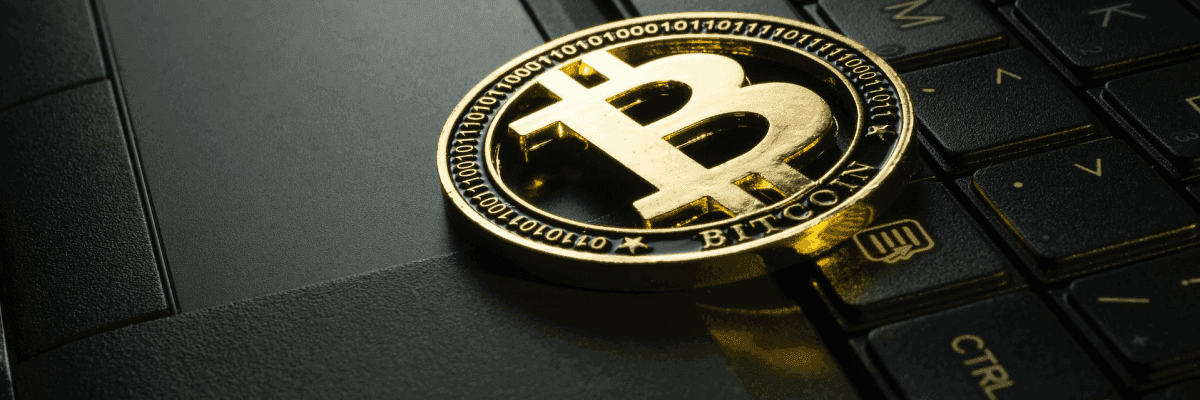Cryptocurrencies have evolved from a fringe concept shrouded in scepticism to a recognised part of the global financial ecosystem.
In this transition, cryptocurrencies have carved out a critical role at the intersection of digital assets and traditional banking systems.
Modern financial transactions are increasingly turning to crypto, not just for their inherent benefits, such as security and privacy, but also for their speed and efficiency.
Contrasting traditional banks with crypto exchanges
Banks and crypto exchanges could be considered two sides of the financial coin, each playing a unique role in today’s ever-evolving financial landscape.
Banks, as we know them, are trusted intermediaries facilitating transactions and providing lending services, but their reliance on regulated fiat currencies can lead to higher fees and slower transactions.
In contrast, crypto exchanges provide a decentralised platform for purchasing, selling, and trading cryptocurrencies. Often more agile, they offer swift transactions and lower fees.
Centralized exchanges combine elements of traditional banking trust and regulatory oversight with the speed and flexibility of crypto transactions.
Understanding these exchanges is critical for efficient crypto asset management and learning to transfer Bitcoin and other digital currencies to bank accounts smoothly.
Transfer bitcoin to your bank account
With the increasing integration of crypto assets into the global financial landscape, selling Bitcoin, as well as other cryptocurrencies, has become relatively seamless on a multitude of exchanges.
The journey to liquidation typically commences with accessing your Bitcoin wallet integrated within your chosen exchange platform. You can oversee and regulate a wide range of cryptos in this secure digital repository, including the pioneering Bitcoin.
To proceed with selling, navigate to Bitcoin within your wallet and kick-start the selling procedure. During this phase, you convert your Bitcoin into a traditional fiat currency, ranging from the widely accepted USD to the EU’s Euro or other local currencies, depending on your geographical location and preference.
Before finalising the sale, it’s imperative that you conscientiously review the particulars of the transaction.
This includes not only the current exchange rate, which could fluctuate rapidly due to the volatile nature of cryptocurrencies, but also the receiving bank account details. Accuracy in these details is critical to ensure a successful transaction.
Procedure to transfer bitcoin to your bank account
Upon successfully selling your Bitcoin or other owned cryptocurrencies, you immediately withdraw the equivalent fiat money to your bank account.
This is typically executed by navigating to your centralized exchange platform’s ‘Transfer’ or ‘Withdraw’ section. Once there, your selection would gravitate towards the ‘Fiat’ or a similar option indicating withdrawal in a traditional currency.
The next step entails choosing your linked bank accounts as the destination for the withdrawal. The platform will prompt you to input the amount you wish to withdraw in your chosen fiat. It’s advisable to always meticulously double-check the entered details before confirming the transfer to avoid any unwarranted discrepancies.
Converting Bitcoin or other cryptos into fiat often pay taxes. These taxes vary from platform to platform and may also depend on the transaction volume.
Therefore, before initiating the process, you must acquaint yourself with these potential costs. Understanding the fee structure can clarify the net amount you can expect to receive in your bank account, facilitating more informed financial decisions.
Converting crypto to fiat currencies: Steps and factors to consider
Cryptocurrencies, while digital assets, usually need to be converted to traditional, government–issued, globally recognised fiat to increase their utility in everyday transactions.
Understanding this conversion process, which usually involves selling your cryptocurrency on a platform or centralized exchange, is crucial.
The importance of centralised exchanges in crypto to fiat conversion
Centralised exchanges are a linchpin in this process, serving as intermediaries facilitating transactions for users who want to buy, sell, or convert crypto to fiat. A critical factor when conducting these conversions is the exchange rate, which can fluctuate widely due to the volatile nature of cryptocurrencies.
To get the best possible rate, it’s crucial to time your transactions carefully. Remember that most exchanges charge a service fee, so comparing rates and fees across various platforms is a wise step. Also, verify if the payment method is aligned with your expectations.

Crypto transfers made easy with swissmoney app
The swissmoney app is a powerful tool that simplifies the management of crypto transactions. This user-friendly platform makes it easy to transfer crypto assets, such as Bitcoin, to your bank account. Here’s how:
- First, ensure your swissmoney account has a sufficient cryptocurrency balance you want to transfer.
- Next, go to the ‘Transfer’ section, enter the recipient’s details, and specify the amount of crypto you want to transfer.
- Confirm the transaction, and you’re done!
In addition to facilitating seamless crypto transfers, the swissmoney app offers numerous other features to enhance your crypto experience.
One standout feature is the swissmoney crypto debit card, which allows you to use your cryptocurrencies as conveniently as fiat online or in physical stores. You can even use the swissmoney crypto debit card at Bitcoin ATM to manage your assets.
The app also includes user-friendly features such as real-time balance updates, transaction history overviews, and debit card status checks.
Methods to convert Bitcoin into cash
To convert Bitcoin or other cryptocurrencies to cash, you typically sell your crypto on a platform and transfer the fiat money to your bank account. Alternatively, you can use Bitcoin ATMs to sell or buy it, which often incur higher fees.
Peer-to-peer exchange offers another cash-out Bitcoin option, allowing direct transactions between users in return for cash or other payment methods.
Regardless of your chosen method, always consider transaction fees and exchange rates, as these can significantly affect the amount you receive. Most platforms charge a fee, and the exchange rate between Bitcoin and your local fiat can vary greatly.
Regularly assessing your chosen platform’s fee structure and monitoring exchange rates can help maximise your returns.
Looking to exchange your crypto for fiat? Explore our guide on how to exchange crypto to fiat for a step-by-step process to convert your digital assets into traditional currency.
In conclusion
Understanding how cryptocurrencies interact with traditional banking systems is vital in the constantly evolving digital finance landscape.
The advent of reliable platforms like swissmoney has dramatically simplified buying, selling, and converting cryptocurrencies. However, users should remain aware of potential costs, such as transaction fees and fluctuating exchange rates.
With strategic planning, informed decision-making, and user-friendly platforms at your disposal, navigating the crypto landscape can be a breeze.
As the blending of the traditional banking world with cryptocurrencies continues, we can anticipate more exciting developments in global finance.
Frequently asked questions about trade crypto
How can I withdraw Bitcoin to my debit card?
You must first sell Bitcoin for a fiat currency like GBP or USD on trusted crypto exchanges. After the sale, you can withdraw the funds to a linked bank account.
Some platforms, such as swissmoney, provide crypto debit cards, allowing you to withdraw funds directly from a Bitcoin ATM for added convenience.
How can I withdraw Bitcoins in the UK?
The process is similar in the UK as in other places. You sell your Bitcoin on a reputable crypto exchange and choose GBP as your desired currency.
Once the sale is complete, you can withdraw the funds to your UK bank account. Ensure your platform supports the Faster Payments Service (FPS) for quick transfers.
How can I withdraw crypto to my bank account?
Withdrawing crypto to your bank account is a two-step process.
First, sell your cryptocurrency on a central exchange, then initiate a withdrawal to your linked bank account. The exchange converts crypto into your chosen fiat and transfers the funds to your bank account.
Do UK banks accept funds from crypto transactions?
Yes, many UK banks do accept funds from crypto transactions. However, individual bank policies on funds from cryptocurrency transactions can vary. It’s advisable to check with your bank about their stance on funds from crypto transactions and any potential fees.
Are there any limits to withdrawing Bitcoin to my bank account?
Yes, most cryptocurrency exchanges have minimum and maximum withdrawal limits, which depend on factors like your account’s verification level and the exchange’s policies. Always verify these details on your chosen platform to avoid any issues.

